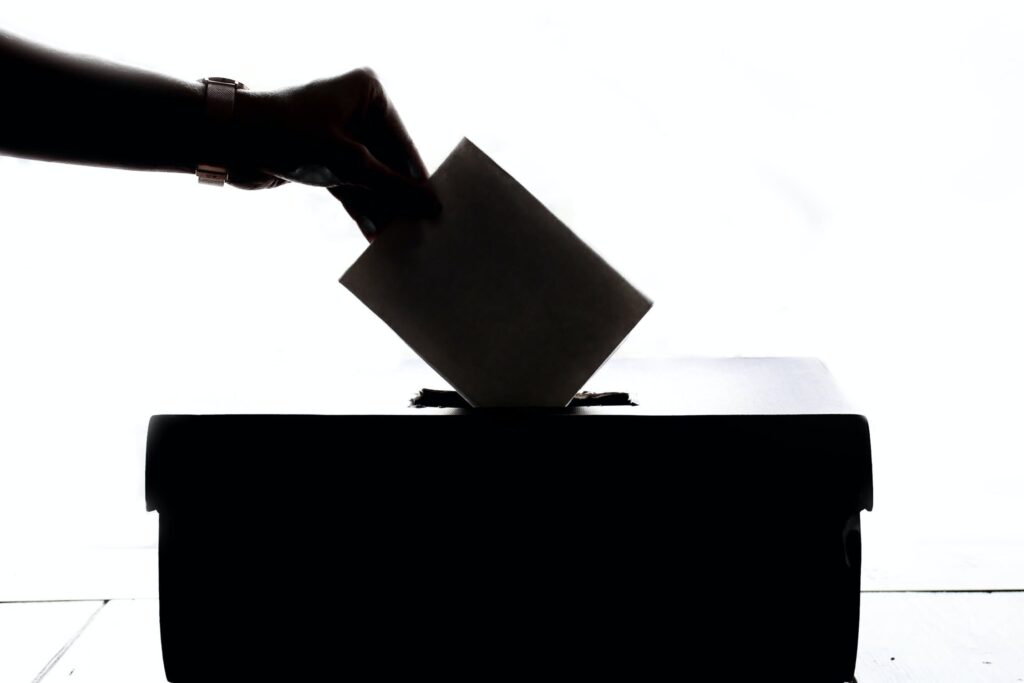Battleground or “swing states,” is a term that refers to states that have closely divided support for Democratic and Republican presidential candidates. Swing states are typically composed of mixed populations that include urban, suburban, and rural voters and easily switch between red and blue each election cycle. According to Taegan Goddard’s Electoral Vote Map, battleground states receive ample campaign visits, ad spending and national attention because the outcomes in non-swing states are clear months ahead of elections. These timely and costly campaign investments rely on the electoral map that can frequently change because of those states.
The most important factor when determining whether a state is a battleground is recent margins of victory and polling data. For example, if a state has a margin of victory of 5 percent or less there is going to be a narrow divide amongst voters that could determine the election’s outcome.
In the upcoming 2020 presidential election, there are six swing states that are going to be pivotal in who takes the White House: Michigan, Wisconsin, Pennsylvania, North Carolina, Florida and Arizona. Wisconsin has 10 votes, Michigan 16, Pennsylvania 20, North Carolina 15, Florida 29 and Arizona 11. Together, these states hold 101 of the 207 electoral votes needed to win the presidency. Although these aren’t the only battleground states, these six are likely to be the tipping point in who the next president will be.
According to the Washington Post, Americans have already cast a record breaking 95 million early ballots, roughly 68 percent of the 139 million votes cast in 2016. Democrats are currently leading with a 2-to-1 advantage in returned mail-in ballots in states with party registration, and states already reporting their election data have requested 88 million mail-in ballots with 44 million already returned.
In order for Biden to beat Trump, he must win Michigan, a state historically more supportive of Democratic candidates. In 2016, Trump beat Hillary by a mere two tenths of 1 percent, or 10,704 votes. He did the same in Pennsylvania and Wisconsin, breaking the traditionally Democratic “blue wall” in those states.
Wisconsin remains a key tipping point for a declared winner. No other battleground has both rural and blue collar white voters who played as big of a role in Trump’s victory in 2016, making Biden’s call to young people in Milwaukee an essential focus of his campaign. Turmoil in Kenosha, Wisconsin over the police shooting of Jacob Blake and the national spotlight put on that state because of its high covid numbers have made their way to the forefront of Biden’s call to voters as well.
Pennsylvania is currently the state most likely to determine the electoral college. Biden is up 51 percent to Trump’s 43 percent, and polls conducted by Quinabag University have been showing a steady Biden lead since the middle of October.
In North Carolina, which aims to break Republican control of the state legislature by flipping one or both chambers of Congress, Biden has a 65 in 100 shot of winning. Biden is currently ahead in the polls by 3 points, or 48 percent to Trump’s 45. Florida is considered a battleground state because many of the statewide elections are decided within one percentage point. There have been close calls in recent presidential elections with candidates winning by only a few points, but Republican elected officials often win the state House and Senate. As of October 31, Trump and Biden are both tied in the polls at 49 percent in that state.
Two weeks before election day, Arizona was already tabulating a record number of early votes. The historically Republican-leaning state is currently polling slightly toward Joe Biden. Responsible for this shift are Latinx voters, Suburban women and seniors. Biden is currently up 2.4 percent with 48.6 percent of the state’s votes in contrast to Trump’s 46.2 percent hold.
Young people are proving to carry a lot of the political power in this election. millennials and some members of Gen Z make up 37 percent of eligible voters, about the same share of the electorate that baby boomers and older voters have, according to census data analyzed by the Brookings Institution. Different voter education initiatives, like Michelle Obama’s “When We All Vote” nonprofit, have been making strides to bridge the gap in low voter turnout among young people.
Other incentives to encourage voter participation are floating around social media such as people handing out free pizza to voters waiting in long lines and Lyft is offering 50 percent off one ride up to $10 to any polling location or dropbox. Additionally, apps like Spotify, Snapchat, and Twitter have developed algorithms to display daily reminders about Election Day and in-app voter registration platforms.
Voter turnout in swing states is going to be an increasingly important factor as election day approaches. The rise in voting by mail this election due to the pandemic may result in a delayed result of the election on November 4. As of now, Biden remains a favorite to win the presidency but his advantage would be more stable if his stance in Pennsylvania improved within the next three days.
